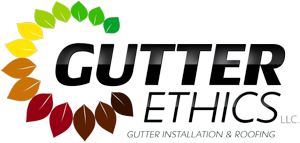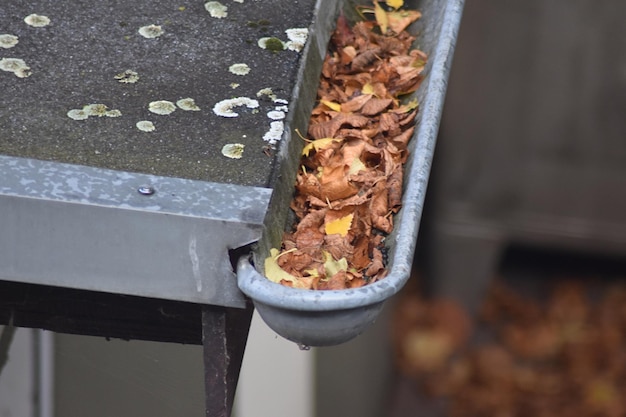Roof Damage Insurance Claims in Northern Virginia: A Step-by-Step Guide
When your roof sustains damage—whether from a heavy storm, fallen tree, or other unforeseen event—it can be stressful, not only due to the damage but also the process of filing an insurance claim. In Northern Virginia, where severe weather events like hailstorms, high winds, and heavy snow are common, understanding how to navigate the insurance claim process for roof damage is essential to getting your home back in shape quickly and efficiently.
At Gutter Ethics, we specialize in roof repairs and work closely with homeowners to ensure they understand every step of the insurance process. In this guide, we’ll walk you through how to file a roof damage insurance claim in Northern Virginia, helping you avoid common pitfalls and ensuring your claim goes as smoothly as possible.
1. Assess the Roof Damage
Before filing an insurance claim, it’s essential to evaluate the extent of the damage. However, climbing onto your roof can be dangerous, so it’s best to call a professional contractor like Gutter Ethics to inspect the damage safely.
Here’s what you can do first:
- Look for Visible Damage from the Ground: Check for obvious signs of damage, such as missing shingles, cracks, or sagging. Use binoculars to get a closer look without putting yourself in harm’s way.
- Check the Inside of Your Home: Go inside your attic and look for signs of water damage. Water stains on the ceiling or walls may indicate a leak coming from your roof.
- Document the Damage: Take photos or videos of the damage to provide clear evidence when you file your claim. Ensure you capture close-up shots of damaged areas and wider shots to show the overall condition of the roof.
2. Contact a Professional Roofing Contractor
While you can assess visible damage yourself, a professional roofer will provide a more thorough inspection. At Gutter Ethics, we can assess your roof’s condition, identify hidden damage, and provide you with a written report of our findings.
- Get an Estimate: A written estimate will detail the cost to repair or replace the roof. This estimate is crucial when dealing with your insurance company, as it can serve as a reference for the amount you’ll need to claim.
- Avoid Immediate Repairs: It’s important not to make permanent repairs until your insurance adjuster has assessed the damage. However, temporary repairs (like covering leaks with a tarp) can prevent further damage.
3. Review Your Homeowners Insurance Policy
Your homeowners insurance policy will determine whether roof damage is covered and the extent of the coverage. Before filing a claim, review your policy to understand the following:
- Covered Perils: Check which causes of damage are covered, such as storms, wind, hail, or tree damage. Most insurance policies will cover damage caused by sudden and unexpected events.
- Exclusions: Insurance typically doesn’t cover damage caused by regular wear and tear, poor maintenance, or aging roofs. Be sure to verify whether the damage meets your policy’s criteria for coverage.
- Deductible: Your deductible is the amount you’ll pay out-of-pocket before your insurance kicks in. Be sure to check how much your deductible is, as it can affect whether filing a claim is worth it.
4. File the Insurance Claim
Once you’ve documented the damage and reviewed your policy, it’s time to file the claim with your insurance company. Follow these steps:
- Contact Your Insurance Provider: Call your insurance company’s claims department or use their online portal. Provide them with the details of the roof damage and any other pertinent information. The more organized and thorough you are, the faster your claim will be processed.
- Submit Documentation: Provide all photos, videos, written assessments, and estimates from your contractor. This will help your insurance company evaluate the claim and determine the coverage.
- Keep Records: Always note the date you filed your claim, the claim number, and the representative’s name for future reference. Keeping track of these details will help you stay on top of the process.
5. Insurance Adjuster’s Inspection
After filing your claim, the insurance company will send an adjuster to inspect the damage to your roof. The adjuster will assess the severity of the damage and determine how much compensation you’re entitled to.
- Be Present for the Inspection: It’s beneficial to be present during the inspection so you can answer any questions the adjuster may have. If possible, have your contractor with you to help ensure that all damage is properly documented and assessed.
- Provide Your Estimate: Share the estimate from your contractor with the adjuster. This can help guide their evaluation and ensure that the payout covers the full cost of repairs.
6. Review the Settlement Offer
Once the adjuster has completed their inspection, your insurance company will send you an offer based on their evaluation. Here’s what to keep in mind:
- Understand the Payout: The insurance payout will cover the cost of repairs or replacement, minus your deductible. The settlement offer should align with the cost estimates provided by your contractor.
- Dispute Low Offers: If the settlement seems too low or doesn’t fully cover the cost of repairs, you have the right to dispute it. Your contractor can assist with providing additional evidence of the damage and an updated estimate if necessary.
7. Schedule the Roof Repairs or Replacement
Once you’ve accepted the settlement, it’s time to move forward with roof repairs or replacement.
- Hire a Qualified Contractor: It’s essential to work with a licensed and experienced roofing contractor like Gutter Ethics for the job. We can help guide you through the process, ensuring that repairs are done efficiently and to the highest standards.
- Pay for the Difference: If your insurance payout doesn’t cover the full cost of repairs, you may be responsible for the difference. Be sure to discuss payment options with your contractor.
8. Prevent Future Roof Damage
After your roof is repaired or replaced, it’s important to take steps to prevent future damage and avoid additional claims. Regular maintenance, including roof inspections and cleaning, can help prolong the life of your roof.
- Schedule Regular Inspections: Have your roof inspected annually, especially after heavy storms or extreme weather. This can help identify small issues before they become major problems.
- Maintain Gutters and Downspouts: Clogged gutters can lead to water backup and roof damage. Keep your gutters clean and free of debris to ensure proper drainage.
Conclusion: Navigating the Roof Damage Insurance Claim Process
Filing a roof damage insurance claim in Northern Virginia can feel overwhelming, but with the right preparation and support, it doesn’t have to be. By documenting the damage, reviewing your insurance policy, and working with a professional contractor, you can ensure that your claim is processed quickly and accurately.
At Gutter Ethics, we’re committed to helping homeowners with roof repairs and insurance claims. If you need assistance with roof damage, from the inspection to the repair, we’re here to help every step of the way.
If you’re ready to take the stress out of gutter maintenance, contact us today. Let us show you why we’re the best in the business!

